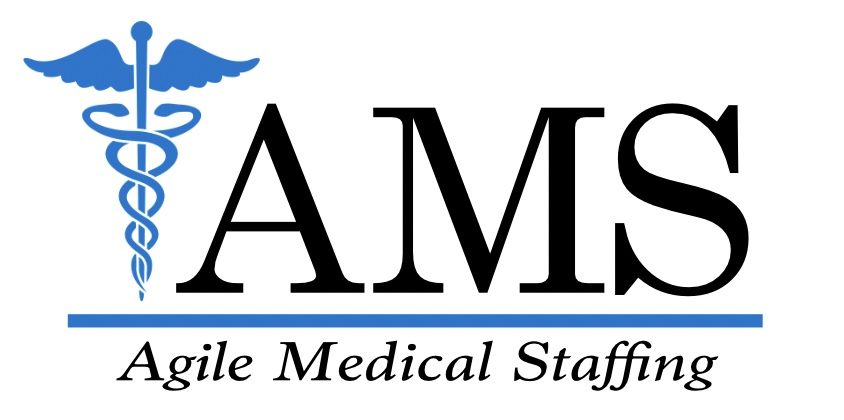Working in healthcare means staying alert, focused, and ready to act. But when long hours pile up and time off becomes rare, even the most dedicated team members can feel drained. Fatigue doesn’t always hit all at once. It starts with small things—maybe it’s a nurse who seems quieter than usual or a technician who starts making mistakes in their reports. These signs can easily be missed, but they’re often the first hint that staff are stretched too thin.
Spotting the early warning signs of staff fatigue is one of the smartest ways to protect your team and your patients. It helps reduce costly errors, improves morale, and keeps your work culture strong. Especially in a place like Dallas, where healthcare demand stays consistent year-round, keeping your team energized and supported can make all the difference in running a smooth facility.
Recognizing The Challenge Of Staff Fatigue
Fatigue isn’t just being tired after a long day. It’s a deeper, ongoing weariness that drains energy, focus, and patience. In busy healthcare settings, it can slip under the radar because the work environment often pushes staff to keep going even when they’re running on empty. Over time, this leads to more than just slowed reaction times. It affects how staff connect with patients, support one another, and make decisions.
The problem is that fatigue isn’t always obvious. People get used to it. They adapt. But that adaptation comes with a cost. Nurses may rush through tasks, techs can miss steps, and managers might find themselves constantly needing to correct or redirect—all signs that fatigue is starting to take a toll on team function. With the summer heat in a city like Dallas combined with already stressful shifts, fatigue can creep in faster than expected.
Recognizing staff fatigue early on allows for faster solutions. It also builds trust. When staff feel seen and supported, they’re more likely to speak up when things become overwhelming. That communication can make a big difference before issues grow larger. The goal is to notice those patterns before they become habits and to respond with steps that help restore balance.
Common Early Warning Signs
Staff fatigue rarely happens overnight. It’s often a gradual build-up, shaped by long hours, high pressure, and emotional strain. It shows up in different ways and can look different from one person to another. Here are some key signs to watch for:
– Physical symptoms: Some of the first red flags might be physical. Frequent yawning, moving slower than usual, or showing signs of burnout like regular headaches or upset stomachs can be signs that someone’s body is running on empty. You might see them taking more sick days or needing longer recovery time between shifts.
– Emotional shifts: Fatigue doesn’t just wear down the body. It can chip away at morale too. You might notice team members who usually stay upbeat becoming withdrawn. Patience can shorten. Little frustrations might turn into bigger conflicts. Staff who normally jump in to help may become passive or distant.
– Behavioral changes: Watch for mistakes or skipped steps in routines. Increased forgetfulness, trouble concentrating, or constant rechecking of tasks can all be signs someone is no longer fully alert. You might also notice someone taking longer to finish usual tasks or avoiding responsibility. These aren’t signs of laziness—they’re often quiet signals that someone is running out of gas.
In one local Dallas facility, a manager noticed a spike in charting errors and short tempers. Instead of waiting, the leadership rearranged shifts for better rest breaks and rotated high-stress tasks. Within weeks, the team was more relaxed, and the mistakes dropped. That’s how powerful early recognition can be.
Spot fatigue, then act on it. That’s better than letting issues pile up when your team could have used some relief sooner.
Impact Of Staff Fatigue On Healthcare Facilities
When fatigue starts to take over your team, it’s not just felt by the individuals themselves. It spreads throughout the entire healthcare environment. There’s often a clear drop in the quality of patient care. Tired employees tend to move slower, miss details, or struggle to keep up with their regular duties. This can make patients wait longer and lower the level of attention they receive during treatment. Over time, that can affect your facility’s reputation and the trust patients place in your care.
Another area fatigue touches is employee retention. Staff members who are constantly worn out are far more likely to leave. Turnover doesn’t just create more pressure on your remaining team. It can add strain to onboarding, delay patient care, and increase training costs. In a large metro like Dallas where the healthcare job market stays competitive year-round, keeping your staff happy and stable helps hold everything together.
Operations take a hit too. Even when the team shows up, the daily tasks slow down. Supplies may be mismanaged, scheduling can get messy, and communication errors often pop up. It’s like trying to run at full speed with sandbags tied to your feet. Everything functions, but not as smoothly or safely as it should. Fatigue doesn’t just wear on people—it wears on systems.
That’s why it makes such a difference to take a step back and prevent it from becoming your new normal.
Proactive Measures To Address Staff Fatigue
The good news is you don’t have to wait for fatigue to do damage before stepping in. Here are simple and realistic ways to keep it at bay before it takes over:
– Rotate shifts with recovery time in mind. Don’t triple-stack high-pressure tasks or stack hard shifts one after another. Give staff space both mentally and physically to recharge between demanding assignments.
– Set time aside for breaks. This might sound obvious, but skipped breaks are incredibly common. Make breaks a non-negotiable part of the shift instead of something that happens only if the day goes smoothly.
– Offer an environment where people feel okay asking for help. Creating a culture where people speak up when they’re overwhelmed helps you step in sooner. That could mean encouraging check-ins during shift change or having a manager regularly ask team members how they’re actually doing.
– Support wellness practices. Small things like providing healthy snacks, better hydration access, or dedicated down-time spots can all help shift the tone of each workday.
– Make space for mental health support. Even just giving your team resources for counseling or stress management can shift workplace energy. Respecting time off also goes a long way.
These steps build resilience one shift at a time. They’re small adjustments but bring big payoffs down the line.
How Staffing Support Helps Address Fatigue In Dallas Facilities
Managing fatigue takes teamwork, but there’s only so much your internal team can do without more hands on deck. Adding qualified professionals into the mix can help reduce burnout. The key is finding staffing that’s reliable, matches your facility’s pace, and understands your community’s needs.
For facilities in Dallas, that also means working with people who understand the local climate—both in terms of patient volume and the summer heat, which doesn’t let up. Healthcare doesn’t slow down in July. Having the right staffing plan keeps things running without adding pressure to your core team.
When you bring in outside support, you can:
– Distribute workloads more evenly without cutting corners
– Help your full-time staff take earned time off
– Fill in gaps when someone’s energy starts to dip
– Keep up with peak demand while preventing long-term exhaustion
Realistic staffing approaches aren’t about covering holes after the damage is done. They’re about supporting a consistent rhythm that helps teams avoid burnout before it breaks the system. That’s how facilities stay strong through the ups and downs of a full calendar year.
Keep Your Staff Energized and Your Facility Running Smoothly
Staff fatigue doesn’t always shout. Sometimes it whispers through missed steps, quiet moods, and off days that come a little too often. When signs get ignored, they turn into habits. And over time, those habits affect every part of caregiving—from the moment a patient walks in to the moment they walk out. That’s why early action isn’t just smart. It’s necessary for keeping things running right.
Being mindful of how your team feels and works isn’t about lowering standards. It’s about building a workplace where people want to keep showing up and giving their best. In Dallas, where healthcare demands stay steady year-round, investing in people is what keeps systems healthy. Spot the signs, respond quickly, and treat your staff’s well-being with the same care you give your patients.
To effectively manage staff fatigue and maintain a high standard of patient care, consider adopting flexible staffing strategies that align with your team’s needs. Our medical staffing solutions in Dallas are designed to provide the support your facility needs to keep your operations steady and your team refreshed. Agile Medical Staffing is here to help you create a healthier, more balanced workplace for everyone.







